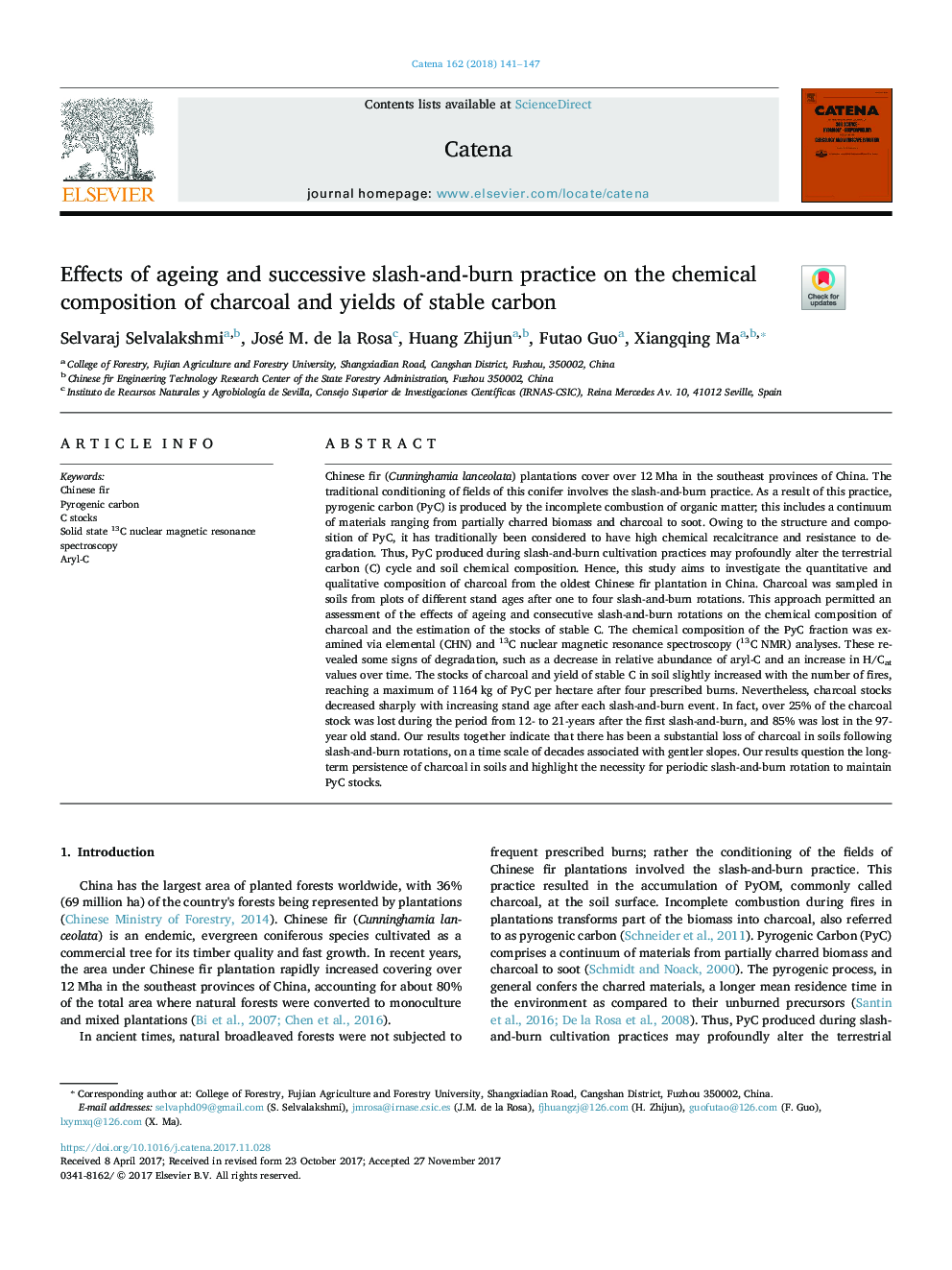| کد مقاله | کد نشریه | سال انتشار | مقاله انگلیسی | نسخه تمام متن |
|---|---|---|---|---|
| 8893738 | 1629192 | 2018 | 7 صفحه PDF | دانلود رایگان |
عنوان انگلیسی مقاله ISI
Effects of ageing and successive slash-and-burn practice on the chemical composition of charcoal and yields of stable carbon
ترجمه فارسی عنوان
اثرات پیری و عمل جراحی برش و سوزاندن بر ترکیب شیمیایی زغال چوب و تولید کربن
دانلود مقاله + سفارش ترجمه
دانلود مقاله ISI انگلیسی
رایگان برای ایرانیان
موضوعات مرتبط
مهندسی و علوم پایه
علوم زمین و سیارات
فرآیندهای سطح زمین
چکیده انگلیسی
Chinese fir (Cunninghamia lanceolata) plantations cover over 12Â Mha in the southeast provinces of China. The traditional conditioning of fields of this conifer involves the slash-and-burn practice. As a result of this practice, pyrogenic carbon (PyC) is produced by the incomplete combustion of organic matter; this includes a continuum of materials ranging from partially charred biomass and charcoal to soot. Owing to the structure and composition of PyC, it has traditionally been considered to have high chemical recalcitrance and resistance to degradation. Thus, PyC produced during slash-and-burn cultivation practices may profoundly alter the terrestrial carbon (C) cycle and soil chemical composition. Hence, this study aims to investigate the quantitative and qualitative composition of charcoal from the oldest Chinese fir plantation in China. Charcoal was sampled in soils from plots of different stand ages after one to four slash-and-burn rotations. This approach permitted an assessment of the effects of ageing and consecutive slash-and-burn rotations on the chemical composition of charcoal and the estimation of the stocks of stable C. The chemical composition of the PyC fraction was examined via elemental (CHN) and 13C nuclear magnetic resonance spectroscopy (13C NMR) analyses. These revealed some signs of degradation, such as a decrease in relative abundance of aryl-C and an increase in H/Cat values over time. The stocks of charcoal and yield of stable C in soil slightly increased with the number of fires, reaching a maximum of 1164Â kg of PyC per hectare after four prescribed burns. Nevertheless, charcoal stocks decreased sharply with increasing stand age after each slash-and-burn event. In fact, over 25% of the charcoal stock was lost during the period from 12- to 21-years after the first slash-and-burn, and 85% was lost in the 97-year old stand. Our results together indicate that there has been a substantial loss of charcoal in soils following slash-and-burn rotations, on a time scale of decades associated with gentler slopes. Our results question the long-term persistence of charcoal in soils and highlight the necessity for periodic slash-and-burn rotation to maintain PyC stocks.
ناشر
Database: Elsevier - ScienceDirect (ساینس دایرکت)
Journal: CATENA - Volume 162, March 2018, Pages 141-147
Journal: CATENA - Volume 162, March 2018, Pages 141-147
نویسندگان
Selvaraj Selvalakshmi, José M. de la Rosa, Huang Zhijun, Futao Guo, Xiangqing Ma,
